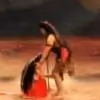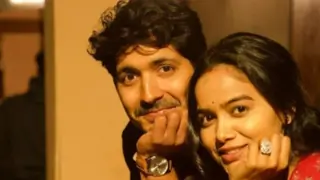Originally posted by: varaali
I would like to analyze this contextually and literally- keeping faith / emotions aside.
Let us forget KMG's translation for a moment and take a look at the two texts we have today- Neelkanth's and the Southern Recession.
Draupadi's VH is described on page 263 / 264. Type this number in the task bar to reach the relevant page
Draupadi's VH is on page 499.
In both the versions, when Dushasana begins to pull her clothes forcibly, Draupadi cries to Krishna for help. In the Neelkanth version Draupadi's prayer is in 8 slokas, in the SR her prayer is in 4 slokas, along with a description by Vaishampayana.
Now, my question is if Krishna was indeed the saviour, why would Vyasa not use this opportunity to sing a stuti of his favourite Lord- that too, at a time when he has performed such a stunning miracle?
In the whole epic, we see two Vyasa trademarks- One- to sing a stuti at a drop of the hat and Two - to launch into a rambling story / narrative from the past.
The second trademark is observed here. After the attempted disrobing, Vidura launches into a long winded story of Prahalaad. This is typical of Vyasa's writing.
But the first trademark is missing here. Why would Vyasa not make Draupadi or Yudhishthira or even Bhishma sing Krishna's stuti at such an emotional moment.
Moreover, the words used in these verses are very inconsistent. In the Neelkant version, when Drauapdi is crying to Krishna "Krishnam cha Visnum cha Hareem...etc etc", there is another line
"Tyaktva shyaasanam Kripalu Kripaya abhyagaat .
This is the only line which may have some indication that Krishna (or his Presence) arrived there. But this crucial line is missing in the Southern recession- thus raising doubts whether this line was a later day interpolation.
And immediately after this comes the much debated line "Tatah astu Dharmaha tarito Mahatma samavarno dvai vividhaihi suvasraihi"
In the Southern Recession, instead of Dharmaha Tarito, we have, Dharmo antarito- which is what KMG used for his translation to mean "Dharma remaining hidden..."
Now the key word here is Mahatma (see red above). KMG uses this word to mean 'illustrious Dharma' With all due respect to KMG, I don't think this word refers to Dhrama at all. Mahatma here refers to Draupadi.
And now, with this one word, Vyasa clears all our confusion. Because Draupadi is a Mahatma, the Dharma that she had been following (her pativrata) saved her. Dharmaha tarito Mahatma. Dharma saved the great soul.
The other very vital clue we get is from the Southern Recension. Here the same line reads "Tatah astu Dharmah antarito" The Dharma that was inside her saved her.
The Dharma that was "inside"- not, as KMG writes "Dharma that was hidden"
Hence, the Dharma that is being referred to here is the 'Dharma' that Draupadi had been following i.e her
pativrata dharma. "Dharma" does not refer to Yudi's Dad or any other external person.
This is my understanding and analysis of this particular section.



































